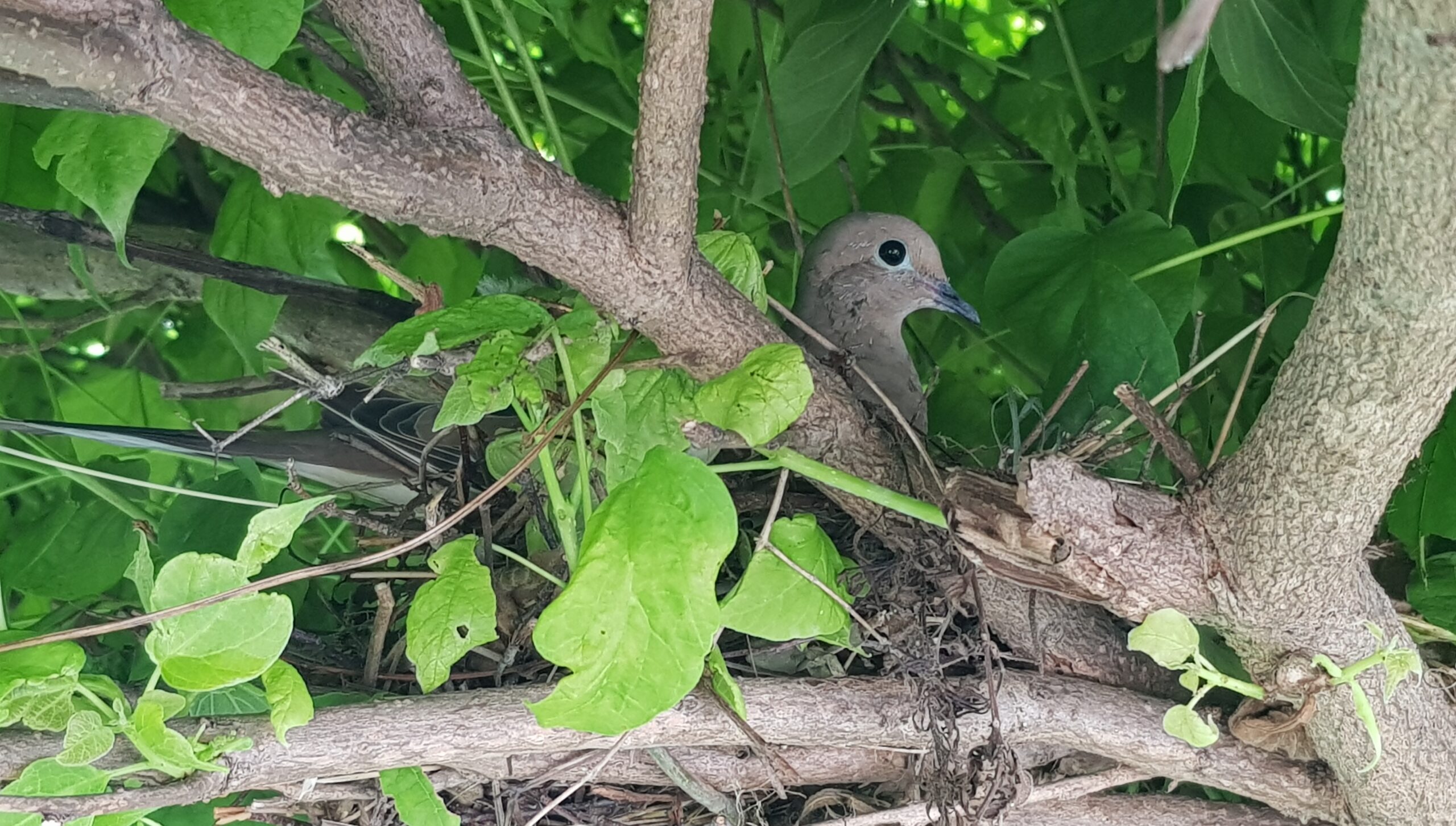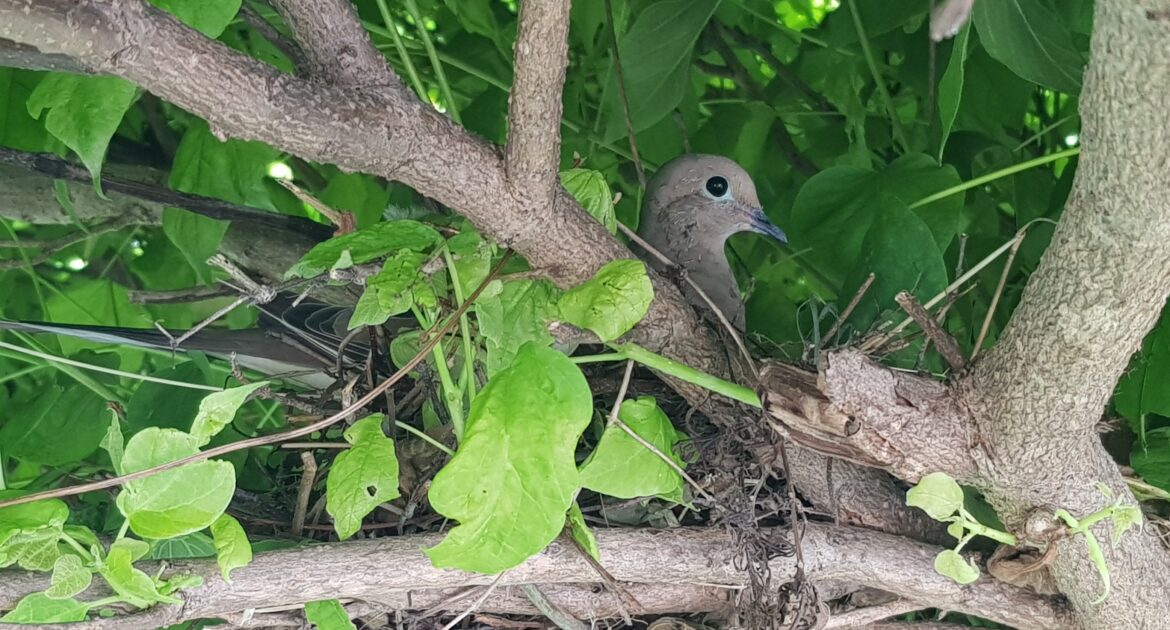Discovering a bird’s nest tucked away in the crooks and crannies of your home can be an enchanting sight, evoking feelings of being closer to nature. However, for many homeowners in Mississauga, these nests often pose unwelcome challenges, from structural damage to attracting tiny bugs. Birds, seeking refuge, frequently choose spots that are less than ideal for us, sparking the question: how to get rid of birds nesting in my home? Addressing this concern requires a blend of expertise, compassion, and the right approach to wildlife control.
Enter Skedaddle Humane Wildlife Control, your ally in managing avian visitors with care and professionalism. We specialize in resolving the dilemma of how to move a bird nest safely and effectively, ensuring that both the beauty of wildlife and the integrity of your home are preserved.
Our services are designed not only to remove the immediate inconvenience but also to provide long-term solutions, preventing future avian encroachments. In the coming sections, we’ll explore the importance of professional wildlife removal in Mississauga and unveil the humane and effective methods employed by Skedaddle to restore harmony between humans and birds.
Types of Birds that Commonly Nest in Mississauga
Mississauga’s urban landscape hosts a variety of bird species that adapt remarkably well to the city’s environment, placing their homes close to human residences. Among these, three species stand out for their common presence and unique nesting behaviours.
Pigeons
Often found in urban areas, pigeons are skilled at making nests in various nooks around buildings and homes. They breed multiple times a year, mostly during the spring and summer, but can also breed in fall if the conditions are right. Their adaptability to urban life makes them one of the most visible bird species in Mississauga.
House Sparrows
House sparrows prefer the cozy corners of buildings to make their nests, and similar to pigeons, they are not shy about living near humans. They typically have two to three breeding cycles from early spring to late summer. These small yet vibrant birds are famed for their resourcefulness in urban settings.
Starlings
Known for their glossy feathers and musical chirping, starlings often select cavities in buildings or trees as their nesting spots. Their nesting season starts in early spring and can extend into the summer. They are particularly adept at urban survival, often seen foraging in parks and gardens.
Understanding Bird Nesting Behaviour
Birds are drawn to nesting in urban areas of Mississauga for several reasons, with the primary attraction being the availability of sheltered locations that offer protection from predators and harsh weather conditions. Eaves, window ledges, and vents on homes provide ideal spots for birds to settle down during their breeding seasons. These places mimic the natural cavities and ledges found in trees and cliffs, offering warmth, safety, and a vantage point to survey their surroundings. Our examination of bird nesting preferences highlights the adaptability of certain species to the urban environment, showcasing their ability to thrive alongside human habitation.
Ideal Nesting Spots for Urban Birds
- Pigeons are particularly fond of nesting in elevated spots such as ledges, under bridges, and in other architectural features of buildings where they can have a wide view of the area and easy access to food sources. Their preference for these locations is due to the warmth and shelter they provide throughout the year.
- House Sparrows make their nests in small, enclosed spaces like vents and eaves, taking advantage of the protection these areas offer from elements and predators. Their nests, often built close to human activity, reflect their comfort in urban settings and their reliance on buildings for nest sites.
- Starlings opt for cavity-like areas, including tree hollows and building cavities, as their nesting grounds. They’re particularly skilled at finding openings in buildings to create a safe haven for their young, emphasizing their adaptability to urban life.
Legal and Ethical Considerations of Bird Nests
In Mississauga, as in much of Canada, birds and their nests are protected under various wildlife conservation laws. These regulations are designed to safeguard birds, emphasizing the importance of not disturbing their nests during critical nesting periods. Notably, the Migratory Birds Convention Act prohibits the destruction or disturbance of nests occupied by migratory birds, a common group within urban settings. This legal framework ensures that any action taken toward managing bird presence in urban areas respects the well-being of these feathered residents and their ecological contributions.
Professional teams, like ours at Skedaddle Humane Wildlife Control, are well-versed in these regulations and committed to upholding ethical standards in all interventions. Understanding the legal protections afforded to birds is crucial for homeowners contemplating how to address unwelcome avian activity. The key is to engage with experts who can assess the situation carefully, determining when it’s legally permissible to intervene and ensuring that any actions, especially those necessitating the repositioning of nests, are conducted within the bounds of the law.
While the presence of nests in and around our homes may pose unique challenges, it’s imperative to approach their removal with respect for wildlife laws and ethical principles. Engaging with professionals who are knowledgeable about the necessary regulations ensures that our actions remain conscientious of both the local wildlife population and the broader ecosystem. This approach helps maintain the delicate balance between human and animal residents in our shared urban environment.
The Potential Risks of Nests on Your Property
The presence of bird nests in close proximity to human residences can introduce several health and safety concerns that warrant careful consideration. One of the primary issues stems from the structural damage that birds can cause to property. Over time, the continuous build-up of nests can weaken the structural integrity of buildings, leading to costly repairs. Additionally, bird droppings are not only unsightly but can also cause damage to paintwork and roofing materials. Furthermore, nests can become breeding grounds for a variety of tiny pests, which may then find their way into human living spaces.
On the health front, there is a genuine concern regarding the potential for disease transmission from birds to humans. Many avian species carry pathogens that can cause illnesses in humans, with their droppings being a common vector for such diseases. The accumulation of droppings in areas where people live or gather increases the risks of respiratory problems and other health issues.
In addressing these challenges, it’s important to approach the situation with a balance of concern for both human welfare and the preservation of bird life. Consulting with experts who understand the complexities of safely and effectively deterring birds from nesting in problematic areas can ensure that any measures taken are both humane and compliant with legal protections for birds. This cautious approach not only safeguards our homes but also respects the ecological role that birds play within our communities.
Our Professional Solutions for Removing Nests
At Skedaddle Humane Wildlife Control, our approach to managing nests combines meticulous assessment with compassionate intervention strategies. Initially, our team conducted a thorough examination of the area to understand the behaviour and nesting patterns of the bird species involved. This evaluation is critical in determining the most ethical and legally compliant course of action.
Safe and Ethical Nest Handling
Our professionals are trained in the most advanced techniques for safely managing nest situations when action is necessary. In the case that birds are nesting inside vents, the nest will be placed next to their original location on the exterior of the home. Skeaddle technicians will then come remove this nest after the babies are able to fly away. This task is undertaken with utmost respect for the well-being of the feathered residents, making certain that the new location supports their survival and growth.
Post-Management Cleaning and Future Deterrence
Following the careful handling of any nest situation, our team focuses on cleaning and sanitizing the area to mitigate health risks associated with droppings and the potential presence of insects. We employ eco-friendly solutions that effectively cleanse without harming the surrounding environment or non-target species.
To prevent future nesting in undesirable locations, we implement a variety of deterrence measures. These strategies are designed specifically for each location, taking into account the architecture of the building and the natural behaviour of the birds. Our solutions range from the installation of physical deterrents to the modification of habitats around the property to make them less attractive for nesting.
Preventing Future Bird Nesting
Ensuring your living spaces remain serene and free from unwanted bird visitors requires a strategic approach to discouraging nesting. At Skedaddle Humane Wildlife Control, we specialize in creating environments that are less appealing to birds, without harming or disturbing these important members of our ecosystem. Here are several effective strategies homeowners can adopt, with our professional guidance, to keep their spaces bird-free.
Modify Architectural Features
Birds often seek out cozy, sheltered areas for nesting. By altering potential nesting spots, such as eaves or ledges, you make your property less inviting. The installation of sloped covers on ledges or the use of products like bird spikes can prevent birds from landing and establishing a nest. Our team can assess your property to identify and modify these architectural features in a bird-friendly manner.
Use Visual Deterrents
Visual aids like reflective tape, decoys, or even certain lights can confuse and deter birds from settling near your living areas. Proper placement of these deterrents is crucial for them to be effective. We can help place these deterrents strategically around your property to ensure maximum effectiveness without compromising the aesthetic of your home.
Implement Habitat Modification
Creating an environment that is less attractive to birds involves modifying the surrounding habitat. This can include removing food sources, such as bird feeders, or access to water. Additionally, maintaining trees and shrubs can limit nesting opportunities. Our team can guide you in making these modifications gently and respectfully, ensuring that the natural visitors choose to settle elsewhere.
Consultation and Tailored Solutions
Every property is unique, which means a one-size-fits-all approach doesn’t work. We, at Skedaddle, offer personalized consultations to understand the specific challenges you face. Our experts will visit your property, conduct a thorough evaluation, and recommend tailored strategies that align with your home’s architecture and your personal preferences.
Effective Solutions for Nest Issues
Dealing with bird nests in a prompt and responsible manner is crucial for the health and safety of both residents and our avian companions. At Skedaddle Humane Wildlife Control, we emphasize the importance of addressing nests with an approach that safeguards the well-being of birds while protecting people and property from potential health risks and damage. Our professional wildlife control services are designed to handle issues related to how to get rid of birds, how to move a bird nest, and concerns about tiny bugs in bird nests with care and compliance with wildlife protection laws.
By choosing Skedaddle for wildlife removal in Mississauga, you align with a team deeply committed to ethical and effective wildlife management. We’re not just about removing wildlife; we’re about creating harmony between human and animal residents through innovative and humane strategies. Our dedication to ethical practices makes us a reliable choice for those seeking compassionate solutions to wildlife challenges.
For a tailored approach that meets your specific needs and ensures the safety of both your family and local wildlife, request an estimate today. Together, we can keep your space serene and secure for everyone who calls it home.




